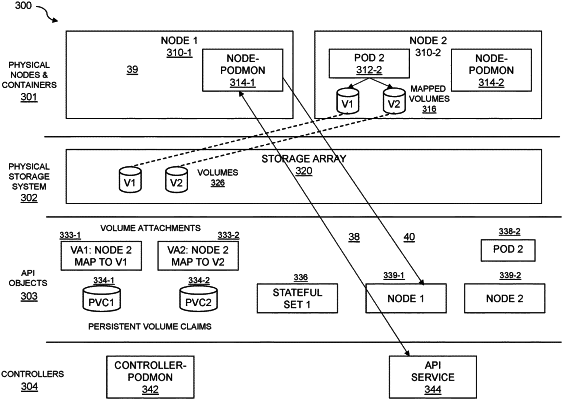| CPC G06F 11/142 (2013.01) [G06F 9/4881 (2013.01); G06F 9/505 (2013.01); G06F 9/5077 (2013.01); G06F 11/0772 (2013.01); G06F 11/1662 (2013.01); G06F 11/3034 (2013.01)] | 20 Claims |

|
1. An apparatus comprising:
at least one processing platform comprising at least one processor coupled to at least one memory, the at least one processing platform, when executing program code, is configured to:
determine when a first node executing at least one containerized workload in an information processing system has failed;
in response to determining the first node has failed, mark a configuration object for the first node with an indicator that the first node is not to be used to schedule execution of a subsequent containerized workload;
isolate, from the first node, one or more storage volumes used by the first node when executing the at least one containerized workload;
delete configuration objects for the one or more storage volumes and for the at least one containerized workload executed by the first node;
cause creation of a replacement containerized workload for execution on a second node in the information processing system;
remove one or more artifacts associated with the at least one containerized workload from the first node; and
remove the indicator from the configuration object for the first node.
|